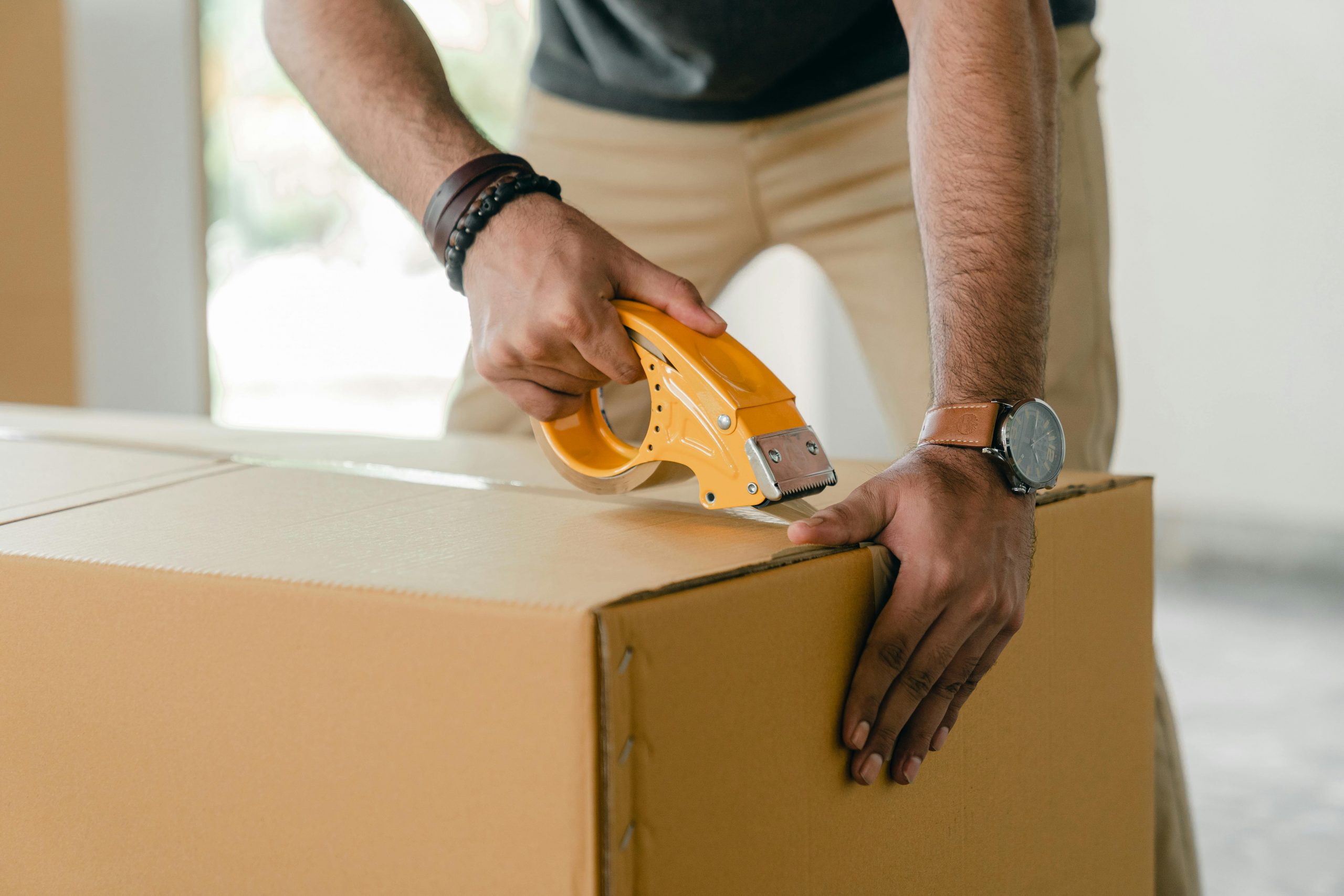When you’re planning a move across town, you can usually make a few trips and grab forgotten items later. But with a long-distance move, there’s no going back for the box you left in the garage. That’s why a move out checklist for long-distance moves is crucial.
This guide will walk you through everything—from early planning to moving day—to keep you organized, minimize stress, and make sure nothing slips through the cracks.
Why You Need a Move Out Checklist for Long-Distance Moves
Let’s be honest—moving is rarely fun. But moving to another state or halfway across the country? That’s next-level overwhelming. Long-distance moves involve more logistics, tighter timelines, and higher costs. A simple mistake—like forgetting to forward your mail or underestimating how much truck space you need—can turn into a big headache.
Having a detailed checklist means:
- You’ll stay on schedule and know what needs to happen when
- You’ll avoid last-minute scrambles or surprise expenses
- You’ll reduce the chance of leaving important tasks or items behind
- You’ll feel more confident and in control during a chaotic time
6–8 Weeks Before Your Move: Get the Ball Rolling
Moving day might seem far away, but the earlier you start planning, the better your experience will be. This stage is all about organizing, downsizing, and locking in major decisions.
Start With Research
- Choose a long-distance moving company: Get at least three estimates. Make sure the companies are licensed, insured, and have good customer reviews. Look for companies that offer binding estimates so your final cost doesn’t spike unexpectedly.
- Consider alternatives: If full-service movers are out of budget, research moving container services (like PODS or U-Pack), freight shipping, or renting a truck if you’re up for the drive.
Create a Moving Budget
Factor in:
- Moving company or container service fees
- Travel expenses (gas, flights, hotels, meals)
- Insurance for your belongings
- Packing supplies
- Temporary housing (if needed)
- Utility setup or cancellation fees
Having a detailed budget will help prevent financial surprises and keep you from overspending.
Begin Decluttering
Moving is the perfect time to cut down on what you don’t need. The less you take, the less you pay.
- Go room by room and sort items into Keep, Donate, Sell, and Toss
- Host a garage sale or list unwanted items online
- Drop donations at local charities or schedule a pickup
- Properly dispose of items like paint, chemicals, or electronics
Create a Moving Binder
This can be digital or physical but should include:
- Moving quotes and contracts
- Receipts (many move-related expenses are tax-deductible if job-related)
- A master to-do list
- Copies of important documents (lease, driver’s license, insurance, etc.)
4–6 Weeks Before Moving: Start Making It Real
With the foundation set, it’s time to start tackling logistics and packing less-used items.
Notify Important Parties
Start updating your address and alerting organizations of your upcoming move:
- United States Postal Service: File a change of address online
- Banks and credit card companies
- Employers and HR departments
- Insurance providers (home, health, car)
- Schools and universities
- Doctor’s offices and pharmacies
- Subscription services (Amazon, streaming, magazines)
Order Packing Supplies
Don’t underestimate how much you’ll need. Include:
- Cardboard boxes in multiple sizes
- Packing tape and dispensers
- Bubble wrap and packing paper
- Permanent markers and labels
- Stretch wrap for furniture
- Mattress bags and specialty boxes for electronics or fragile items
If you’re using professional movers, ask what materials they provide and what you’ll need to supply yourself.
Begin Packing Non-Essentials
Start with items you won’t need until after the move:
- Off-season clothing
- Holiday decorations
- Extra linens, dishes, or kitchenware
- Books, media, and decor
- Hobby or craft supplies
Label each box clearly with its contents and the room it belongs to. Consider color-coding or numbering boxes to keep inventory.
2–3 Weeks Before: Tie Up Loose Ends
This is the make-or-break period where things can start to feel overwhelming. Your move out checklist becomes your daily guide.
Wrap Up Decluttering
That “miscellaneous” pile? It’s time to face it. Get rid of anything you’re still unsure about. Less is always more when it comes to long-distance moves.
Schedule Travel Plans
- Flying: Book tickets early to avoid last-minute price hikes.
- Driving: Plan your route and hotel stays along the way.
- If you’re moving with pets or children, factor in breaks and accommodations for them.
Finalize Details With Your Movers
- Confirm the moving date, pickup and delivery windows, and what’s included in your contract.
- Provide the movers with accurate contact details for both your current and future address.
- Ask what items they don’t move—some movers won’t handle hazardous materials, plants, or valuables.
Back Up Your Electronics
Before packing your computer or external hard drives, make sure everything important is backed up—either to a cloud service or a physical backup. If your electronics are damaged in transit, at least your files are safe.
1 Week Before: Prep for Go Time
This is your final full week before the move. Things should already be feeling boxed up and ready to roll.
Pack a Moving Essentials Box
This should include everything you’ll need for your first few days in the new home:
- Medications and toiletries
- Important documents and IDs
- Chargers, batteries, power strips
- Snacks and bottled water
- A few dishes, towels, and linens
- One or two outfits per person
- Basic cleaning supplies and toilet paper
You’ll likely arrive before your items do, so prepare to be comfortable while waiting.
Finish Packing
By now, you should be down to only daily essentials in the kitchen, bathroom, and bedroom. Begin boxing these up but leave them open until the last minute.
Defrost and Clean Appliances
- Defrost the fridge 48 hours before moving day
- Clean the oven, microwave, dishwasher, and washer/dryer
- Let appliances dry completely to avoid mold or odors
Cancel and Transfer Utilities
Schedule shut-off or transfer dates for:
- Electricity
- Gas
- Water
- Trash and recycling
- Internet and cable
Coordinate service start dates at your new place so everything’s ready when you arrive.
The Day Before the Move: Final Checks
With almost everything packed and ready, now it’s time to do a final sweep and make sure the move will go smoothly.
Double-Check Your Inventory List
If you created a list of items or numbered boxes, now’s the time to verify it. Make sure every item is accounted for and labeled. Keep this list with you—it’s your reference for checking items off after the move.
Pack a Cooler or Food Bag
Moving day is exhausting. Pack:
- Sandwiches or snacks
- Coffee or energy drinks
- Reusable water bottles
- Food for kids and pets
Having quick food on hand will prevent the need for constant fast-food stops.
Prep Cash and Tips
Have some cash ready to tip your movers. Standard tips are $4–5 per hour per mover, or 10–20% of the total cost for long-distance moves.
Moving Day: Time to Go
This is it. If you’ve followed your move out checklist, you should be in great shape.
Final Walkthrough
Before locking the door for the last time:
- Open every cabinet, closet, and drawer
- Check behind doors, under sinks, and in the attic or garage
- Look in the dishwasher, oven, and washing machine
- Leave any remotes, keys, or garage door openers if required
Supervise the Movers
While the movers load your belongings, stay available to answer questions and guide them through any fragile or important items. Double-check that everything listed is loaded into the truck or container.
Lock Up and Secure the Property
If you’re selling your home or returning a rental:
- Shut off lights
- Lock all doors and windows
- Leave any final instructions or notes behind
- Take time for a final moment of closure—it’s the end of a chapter
After the Move: What’s Next?
Once you’ve arrived, the process doesn’t end. Your move out checklist still has a few final tasks.
Inspect Your Items
Go through your inventory list and check that all items have arrived and are in good condition. If anything is missing or damaged, report it to the moving company immediately and file a claim if needed.
Set Up Your Home
Prioritize the essentials:
- Make the beds first
- Unpack kitchen basics
- Set up the bathroom
- Install curtains or blinds for privacy
Take it room by room, and give yourself grace—it doesn’t all have to be perfect right away.
Reconnect Utilities and Services
Ensure your power, water, and internet are functioning. Set up trash service and register your new address with your city or town if needed.
How to Handle Address and Legal Changes After a Long-Distance Move
Once settling in, there’s one more category of must-do tasks that’s often overlooked: legal and administrative changes related to your move. Updating your address is just the beginning—there are several key updates you’ll need to make to stay compliant and avoid issues later.
Update Your Driver’s License and Vehicle Registration
If you’ve moved to a new state, most DMVs require you to update your license and registration within 30 to 60 days. Check your new state’s DMV website for exact requirements and bring the necessary documents (proof of address, ID, old license, etc.).
- Schedule your DMV appointment as early as possible—wait times can be long
- Some states require a vehicle inspection or emissions test before registration
- Update your auto insurance to meet your new state’s minimum coverage requirements
Register to Vote in Your New State
If you plan to vote in local or national elections, you’ll need to re-register with your new address. You can usually do this when updating your driver’s license, or you can register separately online through your state’s board of elections.
Notify the IRS and Social Security
You should also update your address with:
- IRS: Use Form 8822 or update it online
- Social Security Administration (if applicable)
- Any federal or state benefit programs you’re enrolled in
Failing to update your address with federal agencies can result in missed checks, delayed tax documents, or misfiled returns.
Update Wills, Insurance Policies, and Legal Documents
Depending on the move, you may also want to:
- Revise your will or estate planning documents to reflect your new state’s laws
- Review and update homeowner’s insurance, renters insurance, and health policies
- Add or remove coverage based on your new risks (e.g., flood insurance for coastal states)
Inform Your Employer and Professional Licenses
If you’re working remotely or switching jobs:
- Give your employer your new address for tax and payroll purposes
- If you have a professional license (real estate, law, healthcare), update it with the appropriate boards in your new state
Pro Tip: Keep a running list of everyone you’ve updated and who’s still left. It’s easy to forget a subscription service or a rarely-used bank account.
In Summary
Long-distance moving is no small feat. But with a clear, detailed move out checklist for long-distance moves, you’re not just surviving the process—you’re mastering it.
Start early, stay organized, and break everything into manageable steps. By the time moving day rolls around, you’ll be confident, calm, and ready for your new adventure.




